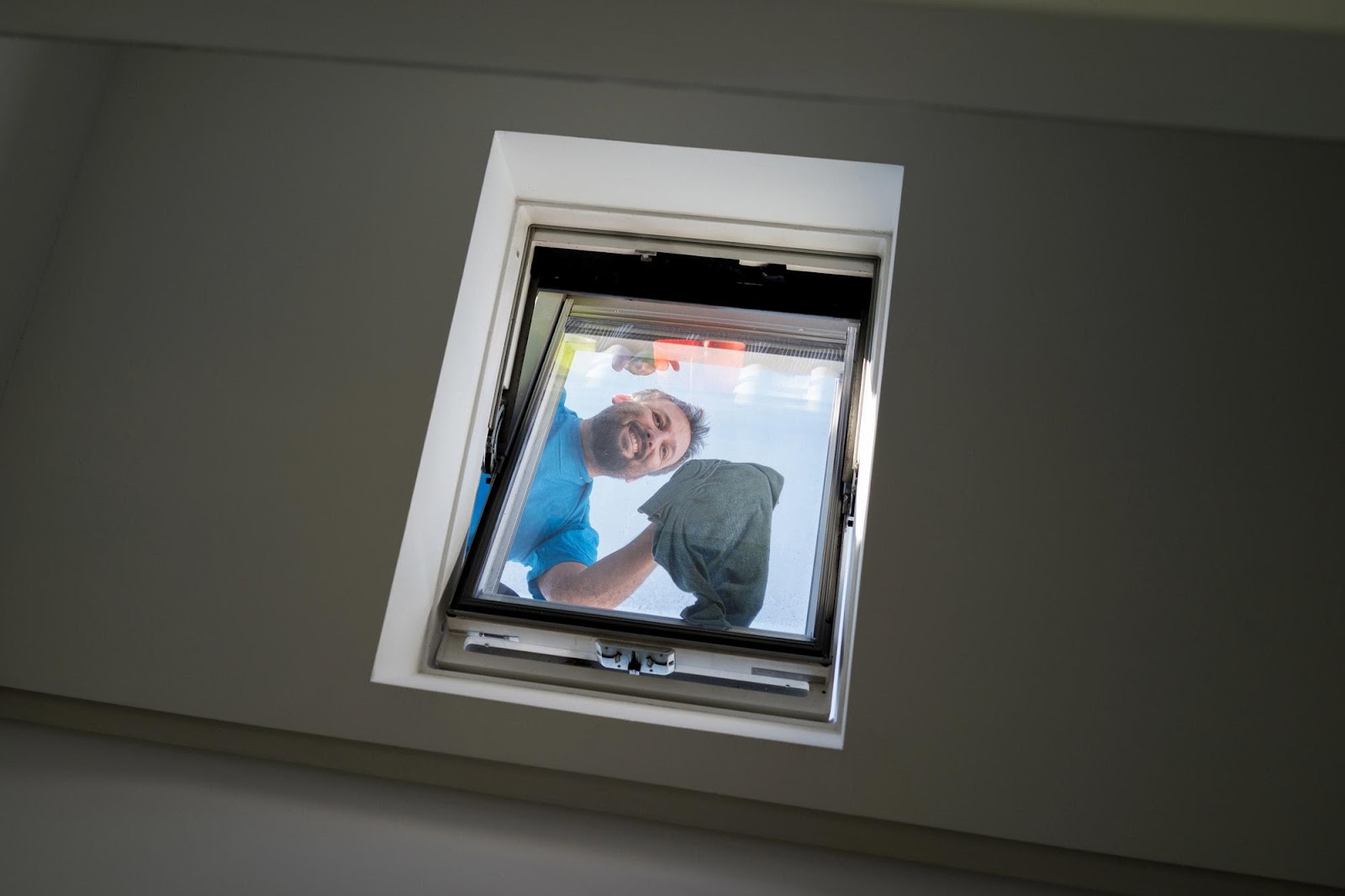Choosing the Right Skylight Material for Long-Lasting Repairs

Understanding the Importance of Skylight Material
Selecting the right skylight material is crucial for ensuring longevity and performance. Poor material choices can lead to frequent repairs, leaks, and energy inefficiency. The ideal skylight material should offer durability, insulation, and resistance to harsh weather. By making an informed decision from the start, homeowners can avoid costly maintenance down the line. A well-chosen skylight can enhance both the aesthetics and functionality of a space.
Common Types of Skylight Materials
Skylights are typically made from either glass or plastic. Each material comes with its own set of benefits and drawbacks. While glass offers superior clarity and durability, plastics like acrylic and polycarbonate are more lightweight and budget-friendly. Understanding the properties of each type is essential when planning repairs or replacements or installing skylights. Choosing the wrong material can reduce the effectiveness of a skylight over time.
Glass Skylights: Classic and Durable
Glass skylights are a popular option due to their clarity and resistance to discoloration. They provide a clear, unobstructed view of the sky and allow more natural light in the room to pour in. Moreover, tempered or laminated glass enhances safety and insulation. Though more expensive upfront, glass skylights tend to last longer and require fewer repairs. Their elegance also adds value to any home.
Acrylic Skylights: Affordable and Lightweight
Acrylic is a common plastic used in skylights for its affordability and light weight. It’s easy to handle during repairs and installation. However, acrylic is more prone to scratches and yellowing over time. It may not provide the house the same level of insulation as glass. Still, for homeowners on a budget, acrylic can be a practical solution for less exposed ceiling areas.
Polycarbonate Skylights: Strong and Impact-Resistant
Polycarbonate is another plastic option that stands out for its strength and impact resistance. It is often used in commercial buildings or areas with high exposure to weather. While it resists breaking and offers good light diffusion, it can be more expensive than acrylic. Over time, it may still suffer from discoloration without proper UV protection. Polycarbonate can be a solid choice for long-lasting repairs in harsh climates.
Single vs. Double Glazing
Glazing refers to the layers of material used in the skylight pane. Single-glazed skylights have one layer, while double-glazed units have two with an insulating gap in between. Double glazing provides the windows with superior insulation and noise reduction. It’s ideal for businesses and for energy efficiency and helps maintain comfortable indoor temperatures. For long-term performance, double-glazed options for businesses are usually worth the investment.
UV Protection and Skylight Longevity
Exposure to ultraviolet (UV) rays can degrade skylight materials over time. Quality skylights include UV-resistant coatings or layers that help preserve the material and protect interior furnishings. Without UV protection, plastics in particular may yellow or become brittle. Glass skylights with UV filtering can help maintain both appearance and performance. Always check the UV resistance ratings when selecting a skylight for repair or replacement.
Insulation and Energy Efficiency
One of the primary concerns in skylight installation and repairs is maintaining energy efficiency. Materials with high insulation properties help regulate indoor temperatures, and energy costs and reducing reliance on heating or cooling systems. Glass, especially when double-glazed, outperforms most plastics in insulation. Polycarbonate with specialized coatings can also help improve energy efficiency. Choosing materials with better insulation leads to long-term energy costs and savings.
Noise Reduction Considerations
If a home is located in a noisy area, material selection and roof ventilation can influence sound insulation. Glass, particularly when laminated, can significantly reduce external noise. Acrylic and polycarbonate do not perform as well in sound reduction. For households near traffic or industrial areas, prioritizing acoustic insulation in roof windows and skylight materials over roof ventilation is key. This enhances both comfort and livability.
Impact Resistance for Harsh Conditions
Skylights are directly exposed to the elements, including hail, wind, and falling debris. Polycarbonate offers excellent impact resistance, making it suitable for storm-prone regions. Glass can also be strong, especially when tempered or laminated, but may still break under extreme heat or stress. Acrylic is the least impact-resistant of the three. Matching material strength to local weather conditions ensures a longer-lasting repair job.
Weight and Installation Complexity
Heavier materials like glass may require additional structural support and professional installation. Lightweight materials such as acrylic or polycarbonate are easier to work with and quicker to install. However, lighter materials may not offer the house the same lifespan. Assessing the structural capabilities of the house and roof is important before selecting a material to install it. A balance between ease of installation and durability is ideal.
Aesthetic Appeal and Light Transmission
Glass skylights provide the clearest and most appealing views. Their transparency allows for maximum light transmission, namely sunlight which brightens interiors beautifully. Acrylic and polycarbonate may have a more diffused appearance. While this can soften light, it may not be as visually striking. Aesthetics matter in the process of both repairs and replacements, especially in living and office spaces or architectural designs.
Maintenance and Cleaning Requirements
Different skylight materials have different cleaning needs. Glass is easy to clean and resists staining, making it low maintenance. Acrylic and polycarbonate may require special cleaners to avoid scratching. Regular maintenance installing skylights is important to prevent buildup and ensure clarity. Choose a material that fits your willingness and ability to maintain it properly.
Cost Considerations
Budget plays a major role in the process of material selection during skylight installation and repairs. Acrylic is the most affordable, followed by polycarbonate, with glass being the most expensive. However, cheaper materials may incur higher costs over time due to frequent repairs or replacements. Evaluating long-term value over initial cost can lead to better decision-making. It’s wise to invest in quality when durability matters.
Fire Safety Ratings
Fire resistance is an often-overlooked factor in skylight material choice. Glass typically has better fire ratings compared to plastic alternatives. In areas where fire safety is a concern, it’s essential to review the fire classification of the new skylight material. Polycarbonate can be treated to be fire-retardant, though not all types are. Always ensure compliance with local fire safety codes when making a selection.
Compatibility with Roof Types
Not all skylight materials work with every roofing system. Heavier glass units may not be suitable for lightweight or older roofs. Flat vs. pitched roofs may also influence custom skylights material choice. It’s important to choose a skylight material that is compatible with the existing roof ventilation structure. Consulting with a roofing professional can help ensure a safe and effective fit with roof ventilation throughout the property.
Lifespan of Different Materials
The expected lifespan of a skylight depends heavily on the material. Glass skylights can last 20 years or more with proper care. Polycarbonate can endure 10–15 years, while acrylic typically lasts under a decade. Longevity depends on installation quality, exposure, and maintenance. Investing in durable materials pays off through fewer repairs and better performance.
Environmental Considerations
Eco-conscious homeowners may consider the environmental impact of skylight materials. Glass is more sustainable and recyclable compared to most plastics. Some polycarbonate and acrylic products are manufactured using recycled content. Energy-efficient solar powered skylight materials also reduce a home’s carbon footprint. Making energy efficient and environmentally responsible choices supports both long-term use and sustainability.
Professional Guidance for Repairs
Repairing or replacing a skylight roof windows often requires more than just picking a material. It’s also about assessing roof structure, flashing, and sealing integrity. Professional skylight installers can help evaluate the best material for your skylights roof windows and your specific situation. They also ensure that repairs meet local building codes and weather conditions. Quality installation combined with the right material is key to a long-lasting repair.
The Role of Local Climate
Climate greatly influences the ideal skylight material. In hot, sunny and warm climates, UV protection and insulation are crucial. For areas with heavy storms, impact resistance takes priority over light show. In colder regions, thermal efficiency is essential. Matching skylight materials to local environmental conditions ensures optimal performance and durability.
Preventing Common Repair Issues
Common skylight issues include leaking, condensation, and discoloration. Many of these problems stem from poor material choices or substandard installation. Opting for high-quality, appropriate materials can minimize these issues. Regular inspections and timely maintenance further extend skylight life. Prevention always costs less than repeated repairs.
Long-Term Value vs. Short-Term Savings
It’s tempting to choose the cheapest material during repairs, but this often leads to less service and more expenses later. High-performance materials offer better insulation, reduced energy bills, more service and fewer repairs. While the upfront cost may be higher, the long-term service benefits outweigh the initial savings. Think in terms of years of service, not just dollars.
Sustainable Light for Health and Mood
A well-placed skylight with natural light does more than brighten a room—it improves mental health and well-being. Natural light reduces eye strain, lifts mood, and can even improve sleep. Choosing perfect skylight materials that maintain clarity and the natural light from transmission over time is essential. Durable skylight materials ensure these health benefits last.
Customization and Flexibility
Some materials offer more flexibility in design and customization. Plastics can be molded into various shapes for creative architectural features. Glass is more rigid but provides a classic look. When repairing a unique office skylight design, material flexibility can be a deciding factor. Always consider the visual and structural needs of customers and the space.
Warranty and Manufacturer Support
A strong warranty is a sign of confidence in a skylight material’s performance. Glass options typically come with longer warranties due to their durability. Always check the terms of coverage, especially concerning discoloration, cracking, or leaks. Reliable manufacturer support adds great value through exceptional customer service and peace of mind during and after repairs.
A Final Word on Choosing Wisely
The material you choose for skylight repairs has a lasting impact on your home’s comfort, efficiency, and aesthetic. Whether selecting for durability, cost, or insulation, every factor matters. Glass, acrylic, and polycarbonate each have their place, depending on your property and specific needs. Don’t just replace—upgrade. The right choice today means more space and fewer headaches tomorrow.
Consider Professional Help in Your Area
For homeowners and businesses looking for guidance on install something tailored to their environment, local expertise is invaluable. For example, professionals specializing in Skylight installation in Brisbane understand the demands of the subtropical climate. They can recommend materials that perform best under high UV exposure and seasonal storms. Regional knowledge ensures customers get a better match between skylight material and environmental conditions. Always seek local advice when in doubt.



